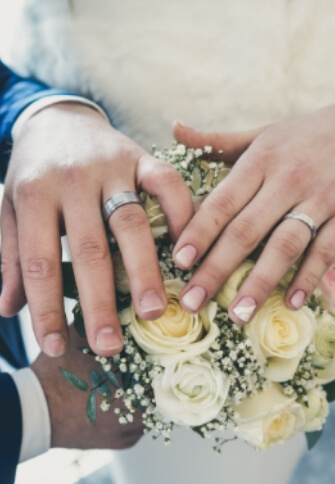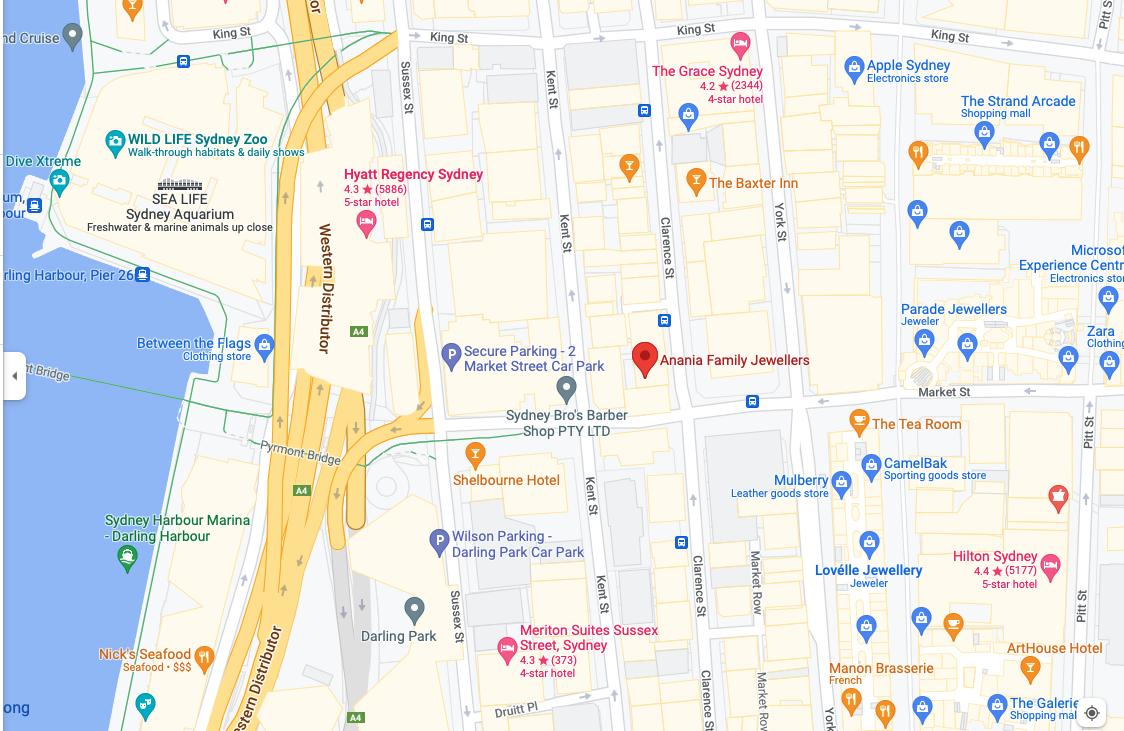The letter G has a faint yellow tint thanks to nitrogen atoms in their atomic structure that absorb blue, leaving a slightly yellowish body colour. These are known as the “Cape series” diamonds after the first big diamond mining area in South Africa.
The colourless grades, D, E, and F colour diamonds, show the least visible colour. G, H, I and J colour diamonds, the “near colourless” grades, have colour that is more visible to the trained eye.
But the hint of yellow in a G-colour diamond is very difficult to see during everyday wear. G-colour diamonds face up colourless even in a platinum, palladium, or white gold engagement ring setting.
G-colour diamonds are also the most popular choice for small accent diamonds in fine quality jewellery.
To detect the hint of colour in a G-colour diamond, the gem is graded in a gemological laboratory upside down so that the body colour of the gem is visible without being diluted by its brilliance, scintillation, and dispersion. The three characteristics that give a diamond its sparkle and shine.
The colour in white diamonds occurs as continuous gradient shading from colourless to light yellow or brown. Diamond colour grades chop this smooth curve of increasing colour into discrete steps.
There aren’t just D, E, F and G colours, there is a spectrum of diamonds with gradually more colour until suddenly a boundary is crossed and the next grade begins.
Drawing the lines between diamond colour grades is very difficult. To make it a bit easier, every diamond’s colour is evaluated in comparison to other diamonds with known grades called a diamond master set. That’s the only way to see the slight differences in colour or absence of colour that characterises the colour ranges.
What does G colour really mean? It means that this diamond, when placed upside down next to a diamond master set, can be seen by a trained professional to have slightly more colour than an F colour but slightly less than an H colour diamond.
The slight differences in colour can only be seen consistently in comparison, face down, in a controlled environment.
Will you be able to tell that your diamond is a G-colour when you wear it in an engagement ring?
If your diamond is set in platinum or another white metal like palladium or bright white gold, professionals will be able to see that your diamond is colourless or near colourless but not its exact colour grade.
The difference that a G colour makes to your diamond’s beauty is less noticeable than the difference that cut quality makes.
But if you want an almost colourless diamond at an accessible price point, G-colour is a good choice for your diamond.







